Home » Wind Energy
Let's assume you have established that you have a good wind resource  on your property, and you decide to undertake a wind energy project. How will you do it? As with any business venture, there is more than one way to structure your involvement. Do you want to own a wind turbine by yourself, or join forces with a partner? Or do you want to sell or lease your land to someone else? The structure you choose for your wind energy business will depend on three main factors.
on your property, and you decide to undertake a wind energy project. How will you do it? As with any business venture, there is more than one way to structure your involvement. Do you want to own a wind turbine by yourself, or join forces with a partner? Or do you want to sell or lease your land to someone else? The structure you choose for your wind energy business will depend on three main factors.
 on your property, and you decide to undertake a wind energy project. How will you do it? As with any business venture, there is more than one way to structure your involvement. Do you want to own a wind turbine by yourself, or join forces with a partner? Or do you want to sell or lease your land to someone else? The structure you choose for your wind energy business will depend on three main factors.
on your property, and you decide to undertake a wind energy project. How will you do it? As with any business venture, there is more than one way to structure your involvement. Do you want to own a wind turbine by yourself, or join forces with a partner? Or do you want to sell or lease your land to someone else? The structure you choose for your wind energy business will depend on three main factors.
At any given time, grid operators must perfectly match electricity supply  with demand. When demand exceeds available supply, grid operators call on customers to reduce load. When supply exceeds demand, grid operators call on generation resources to reduce output. They have operated fossil fuel fired power plants in this way for more than a century. Now, on a grid with rising levels of wind and solar, during moments of energy oversupply, the grid operator’s solution is often to turn down (or curtail) the most flexible resources, like wind or solar.
with demand. When demand exceeds available supply, grid operators call on customers to reduce load. When supply exceeds demand, grid operators call on generation resources to reduce output. They have operated fossil fuel fired power plants in this way for more than a century. Now, on a grid with rising levels of wind and solar, during moments of energy oversupply, the grid operator’s solution is often to turn down (or curtail) the most flexible resources, like wind or solar.
 with demand. When demand exceeds available supply, grid operators call on customers to reduce load. When supply exceeds demand, grid operators call on generation resources to reduce output. They have operated fossil fuel fired power plants in this way for more than a century. Now, on a grid with rising levels of wind and solar, during moments of energy oversupply, the grid operator’s solution is often to turn down (or curtail) the most flexible resources, like wind or solar.
with demand. When demand exceeds available supply, grid operators call on customers to reduce load. When supply exceeds demand, grid operators call on generation resources to reduce output. They have operated fossil fuel fired power plants in this way for more than a century. Now, on a grid with rising levels of wind and solar, during moments of energy oversupply, the grid operator’s solution is often to turn down (or curtail) the most flexible resources, like wind or solar.
 Detailed system planning for new generation and transmission infrastructure is used to ensure that the electric system can be operated reliably and economically in the future. Advanced planning is required due, in part, to the long-time horizons required to build new electricity infrastructure. More specifically, electric system planners must evaluate the adequacy of transmission to deliver electricity to demand centres and the adequacy of generation to maintain a balance between supply and demand under a variety of operating conditions.
Detailed system planning for new generation and transmission infrastructure is used to ensure that the electric system can be operated reliably and economically in the future. Advanced planning is required due, in part, to the long-time horizons required to build new electricity infrastructure. More specifically, electric system planners must evaluate the adequacy of transmission to deliver electricity to demand centres and the adequacy of generation to maintain a balance between supply and demand under a variety of operating conditions.
In just a few short decades wind energy has matured dramatically,  making wind one of the fastest growing sources of electricity in the world today. Due to technological advancements, policy initiatives, and economic drivers, wind energy is now able to make a cost-competitive contribution to our growing energy needs. Turbines today are sleek and slender machines, a far cry from their bucolic wooden ancestors. Around the world, wind turbines of all sizes have become a familiar sight; ranging from home or farm-scale machines of 1 kilowatt (kW), all the way up to arrays of large 3 megawatt (MW) machines.
making wind one of the fastest growing sources of electricity in the world today. Due to technological advancements, policy initiatives, and economic drivers, wind energy is now able to make a cost-competitive contribution to our growing energy needs. Turbines today are sleek and slender machines, a far cry from their bucolic wooden ancestors. Around the world, wind turbines of all sizes have become a familiar sight; ranging from home or farm-scale machines of 1 kilowatt (kW), all the way up to arrays of large 3 megawatt (MW) machines.
 making wind one of the fastest growing sources of electricity in the world today. Due to technological advancements, policy initiatives, and economic drivers, wind energy is now able to make a cost-competitive contribution to our growing energy needs. Turbines today are sleek and slender machines, a far cry from their bucolic wooden ancestors. Around the world, wind turbines of all sizes have become a familiar sight; ranging from home or farm-scale machines of 1 kilowatt (kW), all the way up to arrays of large 3 megawatt (MW) machines.
making wind one of the fastest growing sources of electricity in the world today. Due to technological advancements, policy initiatives, and economic drivers, wind energy is now able to make a cost-competitive contribution to our growing energy needs. Turbines today are sleek and slender machines, a far cry from their bucolic wooden ancestors. Around the world, wind turbines of all sizes have become a familiar sight; ranging from home or farm-scale machines of 1 kilowatt (kW), all the way up to arrays of large 3 megawatt (MW) machines.
To participate in wind energy, you will need to make decisions about numerous options that exist for harvesting the wind. You should consider all your options before proceeding, since each option has its own risks and rewards. Additionally, there are various financial incentives and markets that may or may not apply to your situation. If incentives are available to you, these can also influence which option you choose. This fact sheet will help you begin to understand the basic options for participating in wind energy.
numerous options that exist for harvesting the wind. You should consider all your options before proceeding, since each option has its own risks and rewards. Additionally, there are various financial incentives and markets that may or may not apply to your situation. If incentives are available to you, these can also influence which option you choose. This fact sheet will help you begin to understand the basic options for participating in wind energy.
 numerous options that exist for harvesting the wind. You should consider all your options before proceeding, since each option has its own risks and rewards. Additionally, there are various financial incentives and markets that may or may not apply to your situation. If incentives are available to you, these can also influence which option you choose. This fact sheet will help you begin to understand the basic options for participating in wind energy.
numerous options that exist for harvesting the wind. You should consider all your options before proceeding, since each option has its own risks and rewards. Additionally, there are various financial incentives and markets that may or may not apply to your situation. If incentives are available to you, these can also influence which option you choose. This fact sheet will help you begin to understand the basic options for participating in wind energy.
 When you picture a wind farm, chances are you imagine vast expanses of open land, dotted with towering turbines. But there's another type of wind farm you might not have considered: one that shares space with crops and livestock. Wind energy and agriculture are a natural fit. Farmers and ranchers have long taken advantage of the breeze to cool barns and dry grain. Now, they're also harnessing that wind power to generate electricity.
When you picture a wind farm, chances are you imagine vast expanses of open land, dotted with towering turbines. But there's another type of wind farm you might not have considered: one that shares space with crops and livestock. Wind energy and agriculture are a natural fit. Farmers and ranchers have long taken advantage of the breeze to cool barns and dry grain. Now, they're also harnessing that wind power to generate electricity.
Due to technical and economic visibility,  wind power has emerged as one of the most promising renewable energy sources (RES) in recent years. Wind energy capacity can range from a few kilowatts to many megawatts and can be found in many applications. Wind energy can be used in both minor off-grid systems and substantial wind farms connected to the grid. This sort of distributed generation poses issues with the interconnection system due to the absence of active and reactive power control.
wind power has emerged as one of the most promising renewable energy sources (RES) in recent years. Wind energy capacity can range from a few kilowatts to many megawatts and can be found in many applications. Wind energy can be used in both minor off-grid systems and substantial wind farms connected to the grid. This sort of distributed generation poses issues with the interconnection system due to the absence of active and reactive power control.
 wind power has emerged as one of the most promising renewable energy sources (RES) in recent years. Wind energy capacity can range from a few kilowatts to many megawatts and can be found in many applications. Wind energy can be used in both minor off-grid systems and substantial wind farms connected to the grid. This sort of distributed generation poses issues with the interconnection system due to the absence of active and reactive power control.
wind power has emerged as one of the most promising renewable energy sources (RES) in recent years. Wind energy capacity can range from a few kilowatts to many megawatts and can be found in many applications. Wind energy can be used in both minor off-grid systems and substantial wind farms connected to the grid. This sort of distributed generation poses issues with the interconnection system due to the absence of active and reactive power control.
One of the most important economic benefits of wind power is that it reduces the exposure of our economies to fuel price volatility. This benefit is so sizable that it could easily justify a larger share of wind energy in most European countries, even if wind were more expensive per kWh than other forms of power generation.  This risk reduction from wind energy is presently not accounted for by standard methods for calculating the cost of energy, which have been used by public authorities for more than a century. Quite the contrary, current calculation methods blatantly favour the use of high-risk options for power generation. In a situation where the industrialized world is becoming ever more dependent on importing fuel from politically unstable areas at unpredictable and higher prices, this aspect merits immediate attention.
This risk reduction from wind energy is presently not accounted for by standard methods for calculating the cost of energy, which have been used by public authorities for more than a century. Quite the contrary, current calculation methods blatantly favour the use of high-risk options for power generation. In a situation where the industrialized world is becoming ever more dependent on importing fuel from politically unstable areas at unpredictable and higher prices, this aspect merits immediate attention.
 This risk reduction from wind energy is presently not accounted for by standard methods for calculating the cost of energy, which have been used by public authorities for more than a century. Quite the contrary, current calculation methods blatantly favour the use of high-risk options for power generation. In a situation where the industrialized world is becoming ever more dependent on importing fuel from politically unstable areas at unpredictable and higher prices, this aspect merits immediate attention.
This risk reduction from wind energy is presently not accounted for by standard methods for calculating the cost of energy, which have been used by public authorities for more than a century. Quite the contrary, current calculation methods blatantly favour the use of high-risk options for power generation. In a situation where the industrialized world is becoming ever more dependent on importing fuel from politically unstable areas at unpredictable and higher prices, this aspect merits immediate attention.
The theoretical potential for wind, as estimated by the global annual flux, has been estimated at 6,000 EJ/yr. The global technical potential for wind energy, meanwhile, is not fixed, but is instead related to the status of the technology and assumptions made regarding other constraints to wind energy development. Nonetheless, a growing number of global wind resource assessments have demonstrated that the world’s technical potential for wind energy exceeds current global electricity production, and that ample technical potential exists in most regions of the world to enable significant wind energy deployment relative to current levels.
is not fixed, but is instead related to the status of the technology and assumptions made regarding other constraints to wind energy development. Nonetheless, a growing number of global wind resource assessments have demonstrated that the world’s technical potential for wind energy exceeds current global electricity production, and that ample technical potential exists in most regions of the world to enable significant wind energy deployment relative to current levels.
 is not fixed, but is instead related to the status of the technology and assumptions made regarding other constraints to wind energy development. Nonetheless, a growing number of global wind resource assessments have demonstrated that the world’s technical potential for wind energy exceeds current global electricity production, and that ample technical potential exists in most regions of the world to enable significant wind energy deployment relative to current levels.
is not fixed, but is instead related to the status of the technology and assumptions made regarding other constraints to wind energy development. Nonetheless, a growing number of global wind resource assessments have demonstrated that the world’s technical potential for wind energy exceeds current global electricity production, and that ample technical potential exists in most regions of the world to enable significant wind energy deployment relative to current levels.
Wind energy, used by civilizations for thousands of years to grind grain and pump water using windmills, was reborn during the energy crisis of the 1970s when improvements in materials and technology made wind turbines more common. Today, windgenerated electricity is helping to provide for U.S. electrical needs.  Wind is created when solar energy heats the atmosphere. This heat produces differences in air pressure as cold air is denser than warm air. Air is made of gases and gases will naturally move from an area of high concentration to an area of low concentration to equalize pressure differences (reaching an equilibrium), creating wind as a result. In the process, energy from the sun is converted into kinetic energy (the energy in motion).
Wind is created when solar energy heats the atmosphere. This heat produces differences in air pressure as cold air is denser than warm air. Air is made of gases and gases will naturally move from an area of high concentration to an area of low concentration to equalize pressure differences (reaching an equilibrium), creating wind as a result. In the process, energy from the sun is converted into kinetic energy (the energy in motion).
 Wind is created when solar energy heats the atmosphere. This heat produces differences in air pressure as cold air is denser than warm air. Air is made of gases and gases will naturally move from an area of high concentration to an area of low concentration to equalize pressure differences (reaching an equilibrium), creating wind as a result. In the process, energy from the sun is converted into kinetic energy (the energy in motion).
Wind is created when solar energy heats the atmosphere. This heat produces differences in air pressure as cold air is denser than warm air. Air is made of gases and gases will naturally move from an area of high concentration to an area of low concentration to equalize pressure differences (reaching an equilibrium), creating wind as a result. In the process, energy from the sun is converted into kinetic energy (the energy in motion).
Wind energy is a form of solar energy. Wind is caused by the uneven heating of the atmosphere by the sun,  variations in the earth's surface, and rotation of the earth. Mountains, bodies of water and vegetation influence wind flow patterns. Wind speeds vary based on geography, topography and season. As a result, there are some locations better suited for wind energy generation. Wind energy is a special form of kinetic energy in air as it flows. Wind energy can be either converted into electrical energy by power converting machines or directly used for pumpng water, sailing ships, or grinding gain.
variations in the earth's surface, and rotation of the earth. Mountains, bodies of water and vegetation influence wind flow patterns. Wind speeds vary based on geography, topography and season. As a result, there are some locations better suited for wind energy generation. Wind energy is a special form of kinetic energy in air as it flows. Wind energy can be either converted into electrical energy by power converting machines or directly used for pumpng water, sailing ships, or grinding gain.
 variations in the earth's surface, and rotation of the earth. Mountains, bodies of water and vegetation influence wind flow patterns. Wind speeds vary based on geography, topography and season. As a result, there are some locations better suited for wind energy generation. Wind energy is a special form of kinetic energy in air as it flows. Wind energy can be either converted into electrical energy by power converting machines or directly used for pumpng water, sailing ships, or grinding gain.
variations in the earth's surface, and rotation of the earth. Mountains, bodies of water and vegetation influence wind flow patterns. Wind speeds vary based on geography, topography and season. As a result, there are some locations better suited for wind energy generation. Wind energy is a special form of kinetic energy in air as it flows. Wind energy can be either converted into electrical energy by power converting machines or directly used for pumpng water, sailing ships, or grinding gain.
Wind power is the fastest-growing source of electricity worldwide. The American Wind Energy Association estimates that more than $40 billion will be spent worldwide over the next decade to build new wind installations.


The opportunities for industries that build, buy, or invest in wind energy are tremendous. Nowadays, the global environmental crisis is receiving more and more attention, and the utilization of clean energy has become a major issue in promoting sustainable development. Among the various energy sources, wind power generation system has its unique advantages. In this article, we will list a few of the major benefits that wind energy can bring.

Featured Articles
What is the Wind Energy Conversion ...
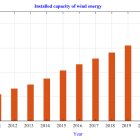 Due to technical and economic visibility, wind power has emerged as one of the most promising renewable energy sources ...
Due to technical and economic visibility, wind power has emerged as one of the most promising renewable energy sources ...
 Due to technical and economic visibility, wind power has emerged as one of the most promising renewable energy sources ...
Due to technical and economic visibility, wind power has emerged as one of the most promising renewable energy sources ...Technical Potential for Wind Energy
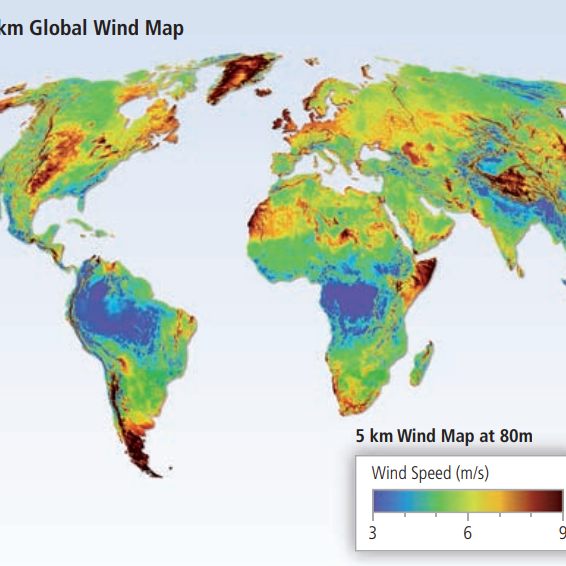 The theoretical potential for wind, as estimated by the global annual flux, has been estimated at 6,000 EJ/yr. The global ...
The theoretical potential for wind, as estimated by the global annual flux, has been estimated at 6,000 EJ/yr. The global ...
 The theoretical potential for wind, as estimated by the global annual flux, has been estimated at 6,000 EJ/yr. The global ...
The theoretical potential for wind, as estimated by the global annual flux, has been estimated at 6,000 EJ/yr. The global ...What Are the Advantages of Wind Energy?
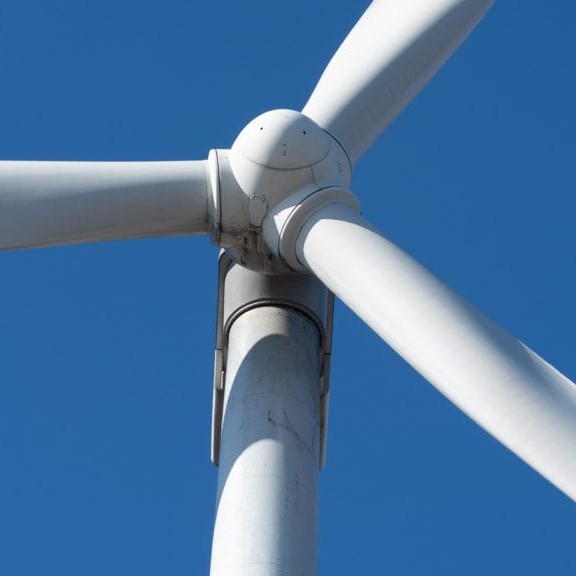 Wind power is the fastest-growing source of electricity worldwide. The American Wind Energy Association estimates that more ...
Wind power is the fastest-growing source of electricity worldwide. The American Wind Energy Association estimates that more ...
 Wind power is the fastest-growing source of electricity worldwide. The American Wind Energy Association estimates that more ...
Wind power is the fastest-growing source of electricity worldwide. The American Wind Energy Association estimates that more ...How Wind Energy is Collected and ...
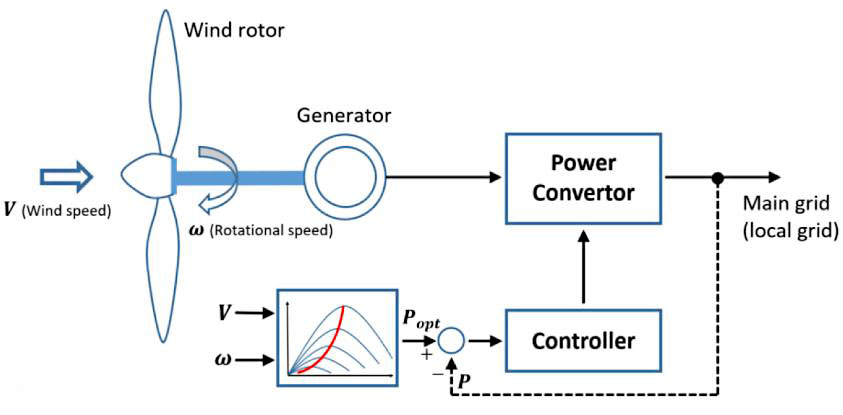 Wind energy is a form of solar energy. Earth’s atmosphere is unevenly heated by solar radiation and the air is in constant motion ...
Wind energy is a form of solar energy. Earth’s atmosphere is unevenly heated by solar radiation and the air is in constant motion ...
 Wind energy is a form of solar energy. Earth’s atmosphere is unevenly heated by solar radiation and the air is in constant motion ...
Wind energy is a form of solar energy. Earth’s atmosphere is unevenly heated by solar radiation and the air is in constant motion ...Wind Energy Background
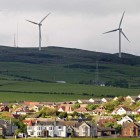 The kinetic energy in the wind is a promising source of renewable energy with significant potential in many parts of the world. ...
The kinetic energy in the wind is a promising source of renewable energy with significant potential in many parts of the world. ...
 The kinetic energy in the wind is a promising source of renewable energy with significant potential in many parts of the world. ...
The kinetic energy in the wind is a promising source of renewable energy with significant potential in many parts of the world. ...